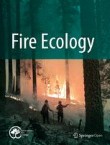Fire Ecology is the official journal of the Association for Fire Ecology.
Cellular automata-based simulators for the design of prescribed fire plans: the case study of Liguria, Italy
Socio-economic changes in recent decades have resulted in an accumulation of fuel within Mediterranean forests, creating conditions conducive to potential catastrophic wildfires intensified by climate change. ...

